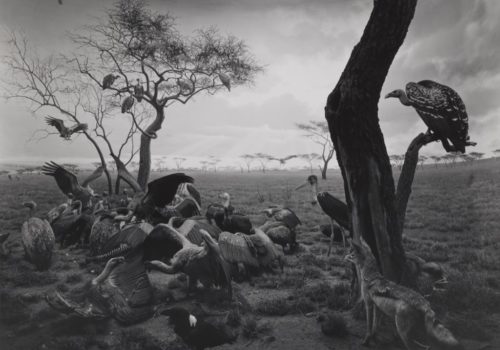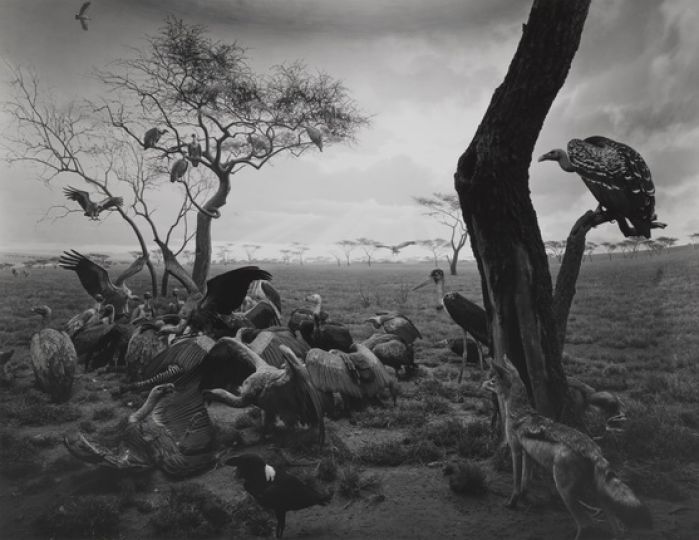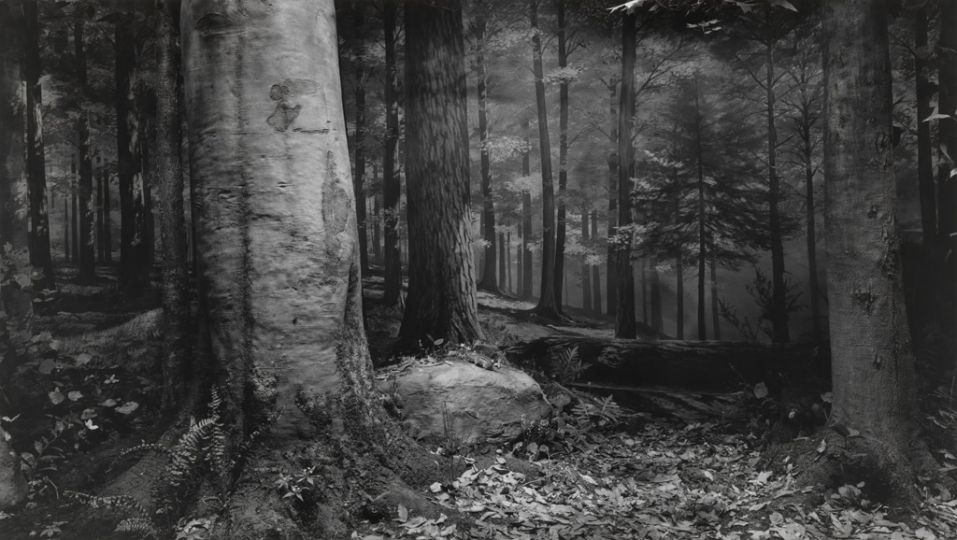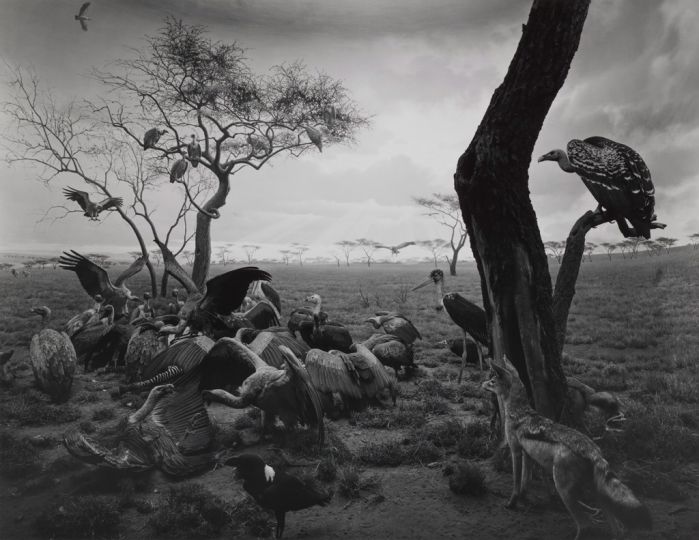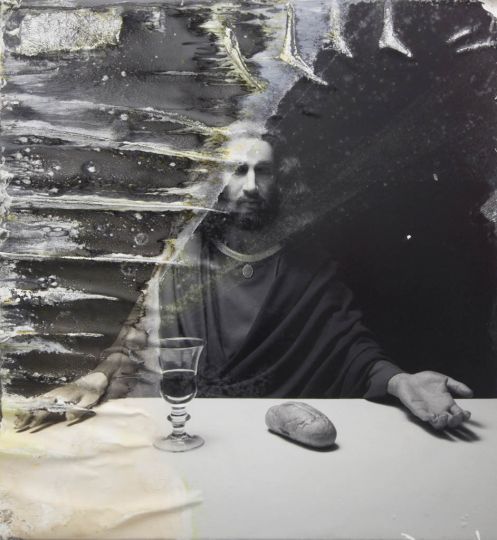Hiroshi Sugimoto (born in Japan in 1948) is considered to be one of the most important living artists. His work consists in black-and-white photographs of formal perfection. All images are taken using a large-format camera. The exhibition brings together Sugimoto’s three best-known series—movie theaters, seascapes, and dioramas—distinct subjects but alike in their conception and execution. Each image is based on the repetition of a single static point of view.
Sugimoto’s work welcomes contemplation. At first glance, his photographs may seem simple to grasp, but the longer one looks the more complex they become, stimulating both vision and intellect. In the seascapes, photographed around the world, we can see only air and water separated by the line of horizon transecting the image. There is no hint of land and no human or animal presence. In these images of the sky and the sea—a visual experience we are well familiar with—the artist explores historical temporality. Going back thousands of years and extending thousands of years into the future, these seascapes are, according to the artist, an invitation to travel in time and share a timeless, eternal view with the ancients.
For Sugimoto photography thus constitutes an instrument of reflection on, and experimentation with, time. His series Theaters, made in abandoned cinemas in the United States, and more recently in Italian movie theaters, shows a series of blank screens, even though Sugimoto took his photographs during screenings, setting the time of exposure to the length of the film. Here, time is delimited by the beginning and the end of the movie. The artist “condenses” hundreds of thousands of images—170,000 to be precise, since a feature film contains 24 frames per second—into a single image. All that remains of those thousands of images is a white, blank rectangle, an existential symbol encapsulated in the cinema interior illuminated by the light of the film projector.
Sugimoto began working on the series Dioramas forty years ago at the Museum of Natural History in New York. Here, photography invites the viewer to question the real. By exploring staged scenes showing stuffed animals mounted within painted landscapes, Sugimoto questions the ambivalent notion of the real intrinsic to photography and makes us go back and forth between reality and fiction. Astonishingly, the black-and-white image reinforces the simulacrum. Sugimoto’s work lays bare the basic human desire to represent reality, a desire which has inspired artists throughout history and found a particularly pertinent outlet with the invention of photography.
Hiroshi Sugimoto, Past and Present in Three Parts
Until January 29, 2017
Musée des Beaux-Arts Le Locle
Rue Marie-Anne-Calame 6
2400 Le Locle
Switzerland

